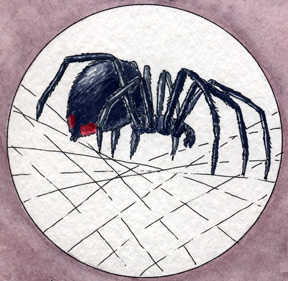

Spiders are not always the most welcome guests in your house, even though most are harmless and actually eat flies and other pest insects. Some spiders are not so harmless. Found in woodpiles, garden sheds and outhouses in the southwestern U.S., the black widow actually strikes terror into their human observers because of their known poisonous bite. How dangerous is the bite of a black widow? In truth, the toxin of a black widow bite is considered about 15 times more venomous than that of a rattlesnake. It sends a painful neurotoxin throughout the body. It is meant to immobilize prey. Its prey are insects, small reptiles and even occasionally small mammals, but it does not attack humans. Humans are bitten by black widows by being in the wrong place at the wrong time. Though they are not aggressive spiders, black widows have a powerful instinct to bite if disturbed. It you touch a black widow, she will bite you. Usually, they can be found hanging harmlessly in the their webs. Only the female’s bite is poisonous. Even male black widows become her prey as the females always eat the male after mating.
When you research information you must cite the reference. Citing for websites is different from citing from books, magazines and periodicals. The style of citing shown here is from the MLA Style Citations (Modern Language Association).
When citing a WEBSITE the general format is as follows.
Author Last Name, First Name(s). "Title: Subtitle of Part of Web Page, if appropriate." Title: Subtitle: Section of Page if appropriate. Sponsoring/Publishing Agency, If Given. Additional significant descriptive information. Date of Electronic Publication or other Date, such as Last Updated. Day Month Year of access < URL >.
Amsel, Sheri. "Black widow spiders attack humans with deadly intent." Exploring Nature Educational Resource ©2005-2024. December 14, 2024
< http://www.exploringnature.org/db/view/Black-widow-spiders-attack-humans-with-deadly-intent >
